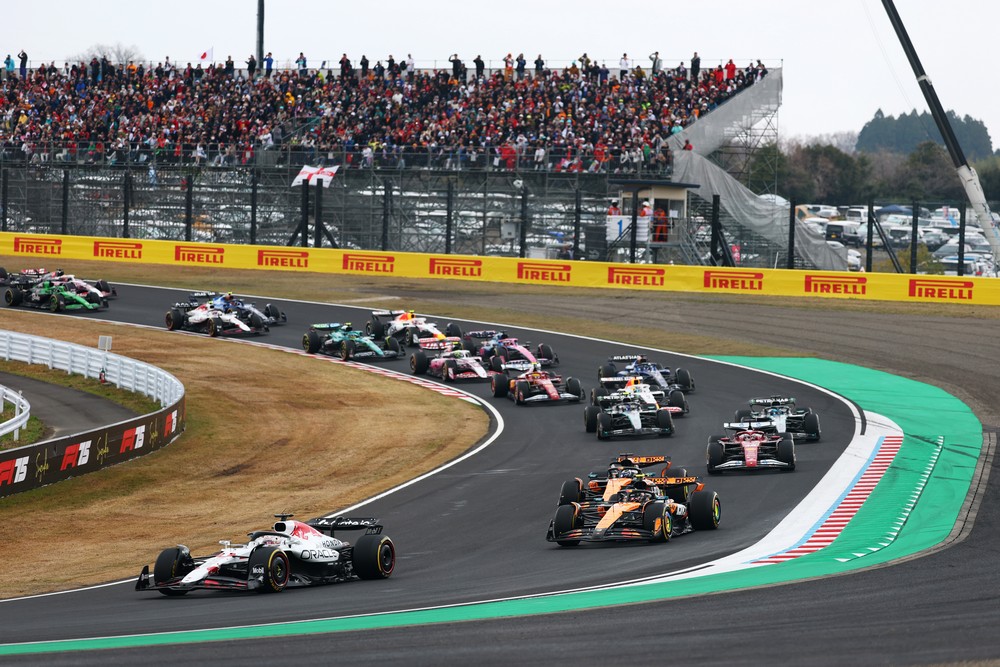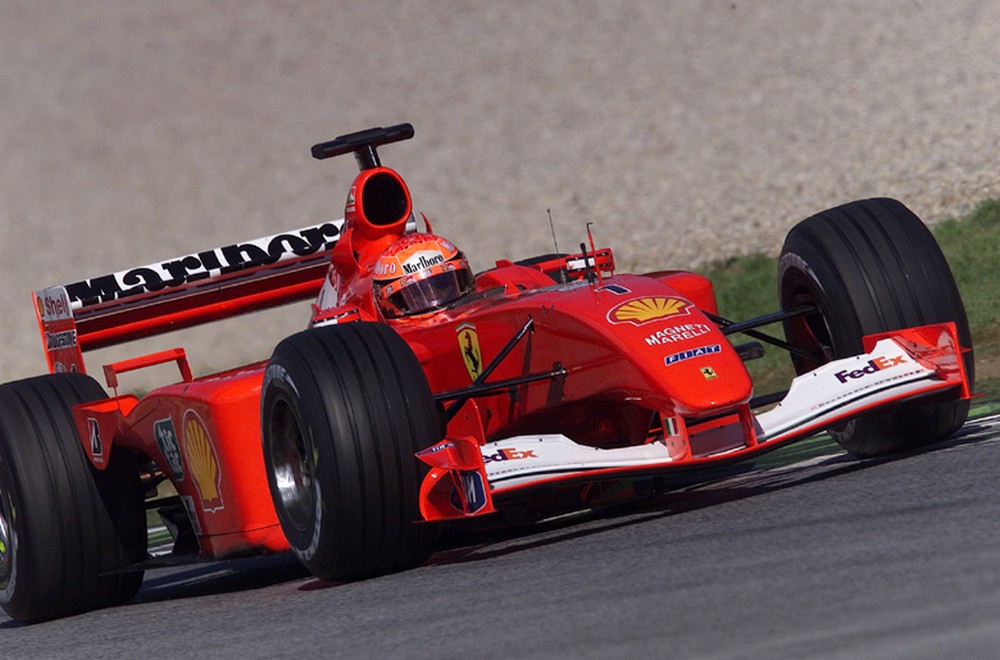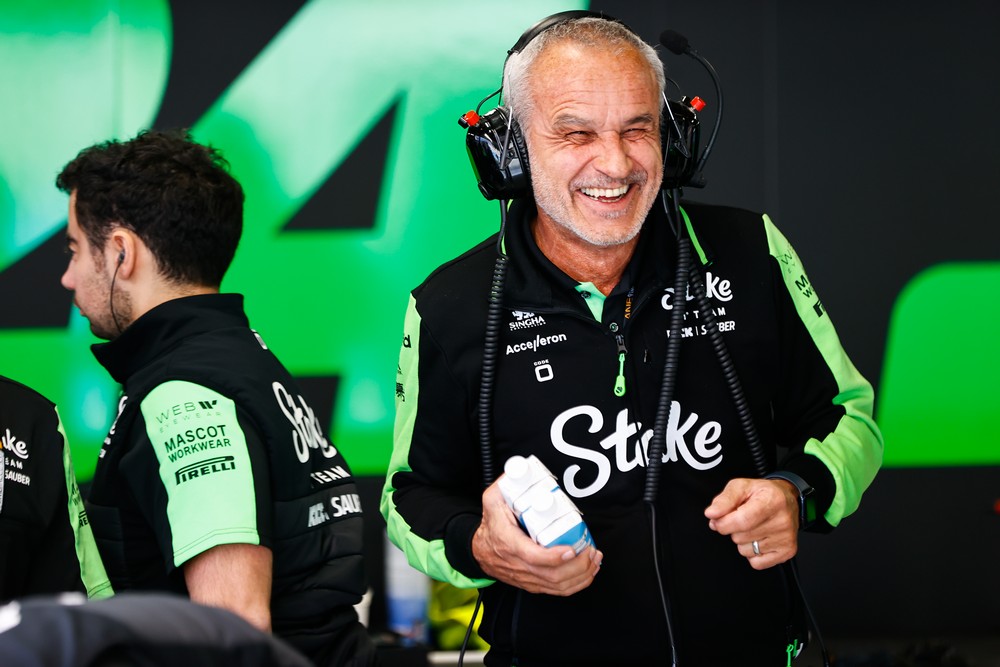
Formula One’s engine manufacturers will meet in Bahrain to discuss the potential revival of the V10 engine. Both FIA president Mohammed Ben Sualyem and FIA single-seater director Nikolas Tombazis have floated the idea of creating V10 engines powered by sustainable fuels. The V10s, iconic for their loud noise, were last seen in F1’s 2005 season before the series moved to the V8 engine. The new engine could be potentially cheaper to develop than the current V6 hybrid turbocharged power units that were first introduced in 2014. It would also more closely align with an unexpected shift in the automotive industry toward sustainable fuel instead of electrification. The meeting between engine manufacturers and the FIA is set to gauge support and viability of the project. Although some have boldly suggested the current engine regulations could be extended until 2028 to support a change to the V10 engines, the more likely option would be 2031, which is the sport’s next engine regulation cycle.
Honda plans to auction unique memorabilia this summer, including parts from the engine of Ayrton Senna’s race-winning McLaren. These parts will come from a Honda RA100E V10 engine from the McLaren MP4/5B that powered Senna to his penultimate drivers’ championship in 1990. The auction, set to be held during Monterey Car Week in August, will also include other memorabilia like signed merchandise, collectables, and other rare artifacts. Honda intends to build the memorabilia aspect of their racing business in the future. “Including our fans to own a part of Honda’s racing history is not intended to be a one-time endeavour, but rather a continuous business that we will nurture and grow,” explained Honda Racing Corporation president Koji Watanabe.

The Ferrari F2001 that helped pilot Michael Schumacher to his fourth World Drivers’ Championship title will be auctioned at the Monaco Grand Prix by RM Sotheby. This will make it the first F1 car auctioned in Monaco during the race weekend, set to be sold at the paddock club before qualifying. The car has a special significance with Monaco, bringing Schumacher his last Monaco victory. Previously, the car was sold for $7.5m in 2017, although it’s anticipated to reach a much higher valuation this time around. A portion of the auction proceeds will be donated to the Keep Fighting Foundation, an organization involved in a variety of charitable work.
Yew Tree Consortium, led by Canadian Lawrence Stroll, has increased its ownership stake in the Aston Martin car company. A £52.5m funding boost brings the consortium’s ownership up to one third from 27.7%. This comes amid financial struggles, declining stock prices, and layoffs at the company. Additionally, the company is also seeking to sell its minority stake (around 17%) in the Aston Martin F1 team. Stroll, who is the company’s executive chairman, said that the Aston Martin name will remain on the grid thanks to a long-term sponsorship deal with the team. The company is seeking an estimated £74m for its ownership stake in the team.
Former Williams team principal Claire Williams has joined Santander as its F1 ambassador. The daughter of the late Sir Frank Williams, who founded the Williams team in the late ’60s, Claire became deputy team principal of the team in 2013, taking over the day-to-day management from her father. Amid financial hardship, Claire was forced to put the team up for sale in 2020, stepping down from her role after selling the team later that year. She has since joined the Spanish bank Santander as an F1 ambassador. This may bring her closer to her former team, as Santander became a sponsor of Williams last year ahead of the arrival of Spanish driver Carlos Sainz.

Sauber has confirmed that long-time director Beat Zehnder will be taking the role of director of signature programs and operations at the team. With ex-Red Bull sporting director Jonathan Wheatley now in his role as team principal, there was some speculation that this would see Zehnder out of a job. Zehnder has been with the Swiss team since its inception in 1993, initially working as a mechanic before being promoted to team manager by Peter Sauber in 1995.
Victor Martins has joined the Williams Racing Driver Academy, having left the Alpine Academy last year. Martin was part of the Alpine Academy since 2018, with a one-year hiatus in 2020 when he lost his spot to Oscar Piastri. After winning the championship in Formula 3 in 2022, Martins graduated to Formula 2 the following year with ART. He left the Alpine Academy after an unfortunate performance in the 2024 season, claiming he had different goals compared to the Academy. His new role in the Williams Racing Driver Academy will see the 23-year-old receive guidance and training as he competes in his third Formula 2 season. He will also get track outings in the 2023 Williams FW45 in private tests.
Carlos Sainz was fined €20,000 for his late appearance for the Japanese national anthem before Sunday’s race. The Williams driver arrived late due to a stomach issue requiring him to visit a trackside doctor who administered medication. Although it may seem like a harsh fine, the FIA reduced the fine from the typical €60,000 due to the mitigating circumstances. Sainz will only need to pay €10,000, with the other €10,000 suspended for 12 months as long as the Spaniard does not commit another violation.
The FIA introduced a new circuit map to the Japanese Grand Prix event notes aimed at reducing the number of safety cars. Looking at previous race data, the FIA concluded that many safety cars could be avoided if drivers park in a more optimal position when retiring on the circuit. Parking in a location that does not require sending a recovery vehicle on the circuit would allow the race director to use yellow flags or the virtual safety car to control the situation. From the Japanese Grand Prix onward, the FIA has included a new map in its event notes that are distributed at the start of the race weekend. This includes a circuit map with optimal retirement locations marked and the track split into colour-coded sections to indicate whether the driver should retire on the left or right side of the road. Additional plans are in place to include this information in the software used by teams on the pit wall, although it will take some time for the software to be updated.
The first free practice session of the Japanese Grand Prix weekend took place on Friday, with Lando Norris setting the pace in the opening session. It was a relatively orderly session. Ryo Hirakawa was behind the wheel of Jack Doohan’s Alpine in his F1 practice debut as part of the team’s rookie driver commitment. He finished an impressive P12, 0.153s ahead of Pierre Gasly in the other car. George Russell was P2 ahead of the two Ferraris, looking to rebound after a shocking double disqualification last time out in China. Max Verstappen rounded out the top five ahead of Yuki Tsunoda, making the step up to Red Bull to replace Liam Lawson.
Oscar Piastri topped a heavily disrupted second free practice session, just 0.049s ahead of his teammate. The session saw four red flags, the first of which was for a heavy crash involving Jack Doohan in the first corner less than 10 minutes into the session. The Aussie lost the rear of the car after entering the corner with the DRS still open. After a lengthy cleanup lasting around 20 minutes, the cars bolted out onto the track to make up for lost time. It was short-lived, with Fernando Alonso becoming beached in turn 8 after dipping a wheel on the grass, requiring the red flag. Another two red flags were thrown before the end of the session for small grass fires on the circuit.
McLaren was again at the top of the time sheets on Saturday, with Lando Norris leading his teammate in the final free practice session ahead of qualifying. It was narrow margins of just 0.026s, and George Russell was a close 0.112s off the leading pace. The session was again halted for a trackside fire in the dry conditions.
Max Verstappen secured pole position during qualifying, beating Lando Norris by only 0.012s in the closing stages of the session. Another small fire briefly paused Q2. At the end of the session, dramatic headlines would emerge as Yuki Tsunoda qualified in P15 behind Liam Lawson, the driver he replaced. But in Q3, all eyes were on the top ten drivers in the final shootout for pole position. Norris crossed the line in provisional pole as the checkered flag fell, but Verstappen put in a stunning final effort to snatch the top spot on his final run. This was the Dutchman’s first pole of 2025.

Max Verstappen would remain on top by the end of the race on Sunday, as the Suzuka Circuit proved difficult to overtake. After a rather uneventful opening lap, much of the race focused on tyre saving. Verstappen managed to keep Lando Norris out of DRS range. The duo clashed in the pit lane, with Norris coming out of his pit box alongside his championship rival. With nowhere to go, Norris clambered over the grass at the pit exit and had to concede the position. In the latter half of the race, Norris was making ground on Verstappen, but lingered just outside of DRS range. Meanwhile, teammate Oscar Piastri appeared to have the quicker pace and requested team orders to go for the race victory. Unfortunately, the team was not on his side, forcing him to settle with P3. Verstappen’s victory brings him to within one point of Norris in the World Drivers’ Championship battle. Click here to read our complete summary of the Japanese Grand Prix.
The action continues next weekend in Bahrain as part of the season’s first triple-header. The 20 drivers will be racing under the flood lights on April 13.
It can be challenging for even the most avid fans to keep up with the fast-paced world of Formula One. The Weekly F1 Recap is a series published each Monday that breaks down the action, both on and off the circuit, into bit-sized pieces. It's perfect for casual and experienced fans alike.